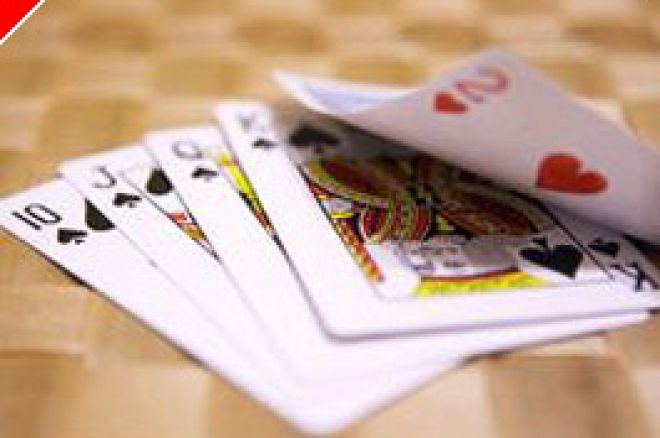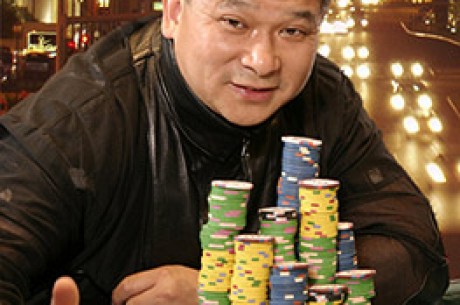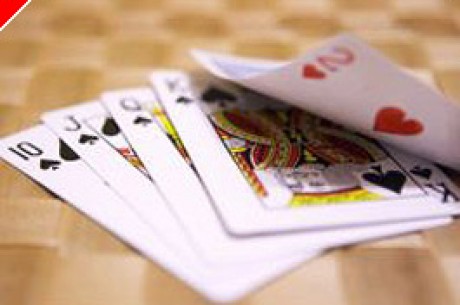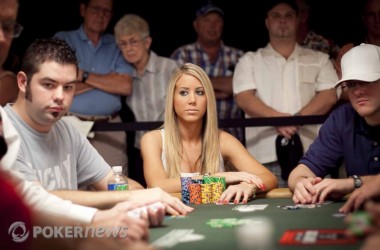Poker Book Review: 'The Poker Tournament Formula'

We've all been in the position, whether in an online poker tournament or a live tournament in a casino. We've sat and nursed our starting chip stack, never growing it significantly, while those around us have chip stacks that dominate the felt in front of them. What if you were told that there was a method so that you could be one of those mountainous stacks on a fast track to the final table rather than the one nursing their chips to a middle of the pack finish?
Noted gaming author Arnold Snyder, whose work in the field of blackjack is considered by many to be unparalleled, now brings his strategic and mathematical analysis to the world of poker with "The Poker Tournament Formula". The book, published by Cardoza Publishing and available at all bookstores, through Amazon.com or on cardozapub.com for roughly $19.95 U. S. ($25.99 Canadian and 13.95 British pounds), is a very exacting and thought provoking work that will bring some new strategies to the poker tables, especially those with short time blind structures and smaller starting stack sizes. At the minimum, "The Poker Tournament Formula" can be used as a method of "changing gears" that some players seem to have problems with at the tables.
The crux of Snyder's work is put into a breakdown of the structure of poker tournaments, which Arnold accurately points out should dictate the style of play that you employ at the tables. By using a formulaic outcome he calls the "patience factor", Snyder breaks tournaments down into six categories, ranging from zero (a crapshoot, in his views) to six (slow, skillful play should be the determinate). Through the determination of what type of tournament you are playing, whether live or online, Snyder then proposes a very simple strategy (which we will get to in a moment).
It comes as no surprise that most online tournaments fall into the first two levels of Snyder's formula, requiring a more freewheeling style of play. Arnold suggests that, in these types of tournaments, more often than not you should be betting that your opponents DON'T have the cards rather than that they do. Because you will get premium hands very infrequently, Snyder suggests to play this gambling style in later position which (unless you run into an opponent's monster hand or another gambling style player) should earn you more pots and, thus, allow you to run deeper into tournaments.
Arnold points out that this freewheeling, gambling style doesn't work quite as well in deep stack or slower blind structure tournaments (those that fall in the four to six range of his scale). Because of the plentitude of chips and the slower level structure, you can play the strategic and patient game that is employed in major tournaments such as those put on by the World Poker Tour. Snyder also points out that these slow structure events can even extend to the high dollar online tournaments and, surprisingly, to some of the low level buy in tournaments that you can find weekly in the Las Vegas casinos.
There were several good points to Arnold's book that I have seen executed in the smaller buy-in events online. The gambling style will be effective if you are at a table that has solid, "rock" style players that won't challenge you back. His theory of "betting the players behind you don't have hands" is a solid one and, if you are played back at, Snyder does offer thorough strategy for handling such situations. These practices overall, if employed judiciously through a tournament, can offer a tremendous ability to make strong runs in fast structure events.
The theories that Arnold provides in the book could be revolutionary for tournament poker in this day and age. The gambling mentality that he proposes have been seen, by this writer in live tournaments and by many on ESPN's broadcasts of the World Series events (especially in 2006), and have been highly useful in their psychological effectiveness and their problematic player categorization at the tables. While many might not be able to pull off the entirety of the strategy over a whole tournament, it can be useful as a "gear change," even in a slower structured tournament.
"The Poker Tournament Formula" is a highly interesting book that will make people rethink their strategies, especially in fast structured tournaments. While some of the book's content after the presentation of Snyder's theories don't reveal anything new, the basis of the "patience factor" and the strategies themselves are well thought out and can be beneficial to many tournament poker players. If you're looking for a new way to consider how to play tournament poker, "The Poker Tournament Formula" could be the book that you are looking for.








